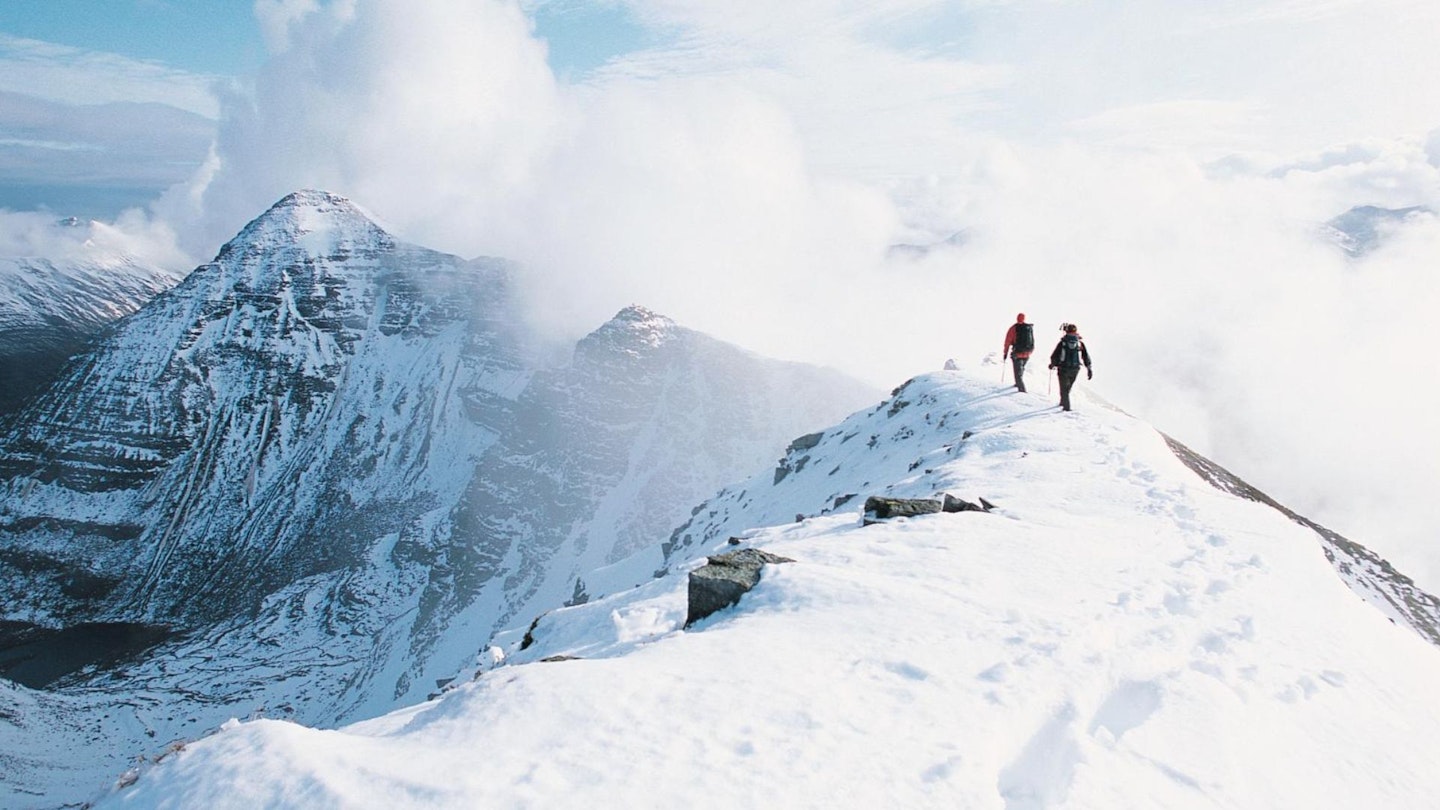The arrival of snow transforms Scotland’s mountains, making them feel even bigger, more spectacular and more epic. Does that make them off-limits for hillwalkers? Absolutely not, says our winter mountaineering expert Garry Smith.
Life affirming, magical and spiritually uplifting may not be terms used by everyone to describe a ridge walk. But question anyone who’s been lucky enough to catch a Scottish mountain ridge in pristine winter condition, especially during a period of high pressure, and their answer is more than likely to be along these lines. Snow-covered ridges in Scotland are spectacular - not just in their appearance or the range of mountaineering challenges they present, but also in their ability to create that inexplicable feeling of fulfilment and wellbeing; the type that only occurs in winter mountain scenery.
While we're here, let’s blow the myth that beautiful winter days are a rarity in the Highlands. They’re not. Across the winter months, bluebird conditions occur more frequently than commonly thought. Each season, at least one stable high-pressure system parks itself firmly over the Scottish mountains, bringing a prolonged period of fine weather. More often, though, good weather is short-lived and localised, involving weak ridges of high pressure that only extend across a narrow area. When such weather is forecast - short term or long - there's no better place to be than up one of these five fantastic ridges.
Essential Winter kit before you go anywhere near a snowy hill: Crampons | Walking Axes | Winter Boots | Base layers | Mid layers | Gloves
1. Forcan Ridge
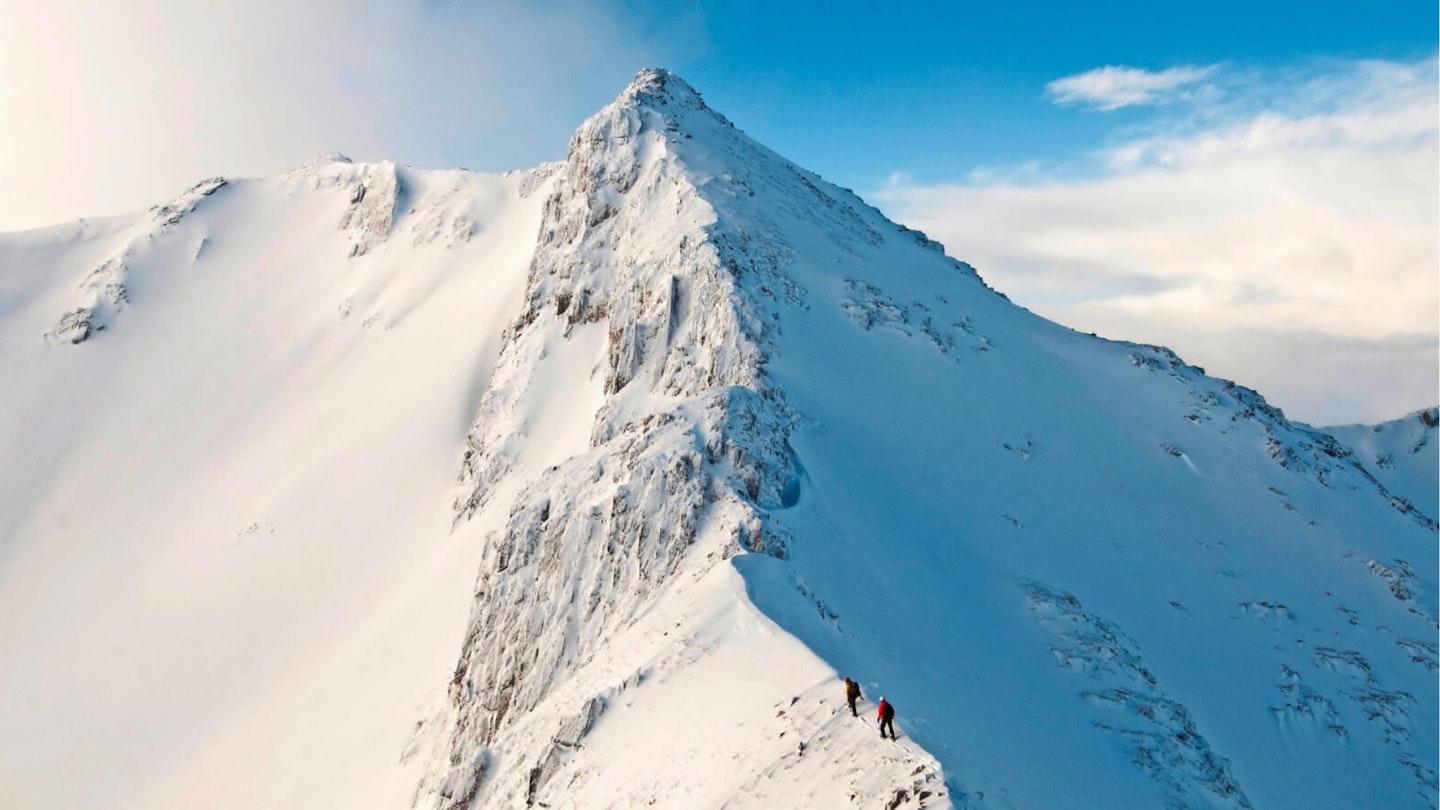
A classic winter ridge in every sense: Forcan is long, wonderfully airy and engaging from start to finish. It is all the more attractive as it leads directly to the summit of the Saddle, Glen Shiel’s most striking peak. The ridge is arguably better with heaps of snow but still a good outing with any level of cover. A right of passage for anyone who loves Scottish winter ridges.
Location: Glen Shiel, Northwest Highlands
Total Ascent: 1350m
Total Route Length: 13km
Technical difficulty: Winter Grade II
2. Ledge Route, Ben Nevis
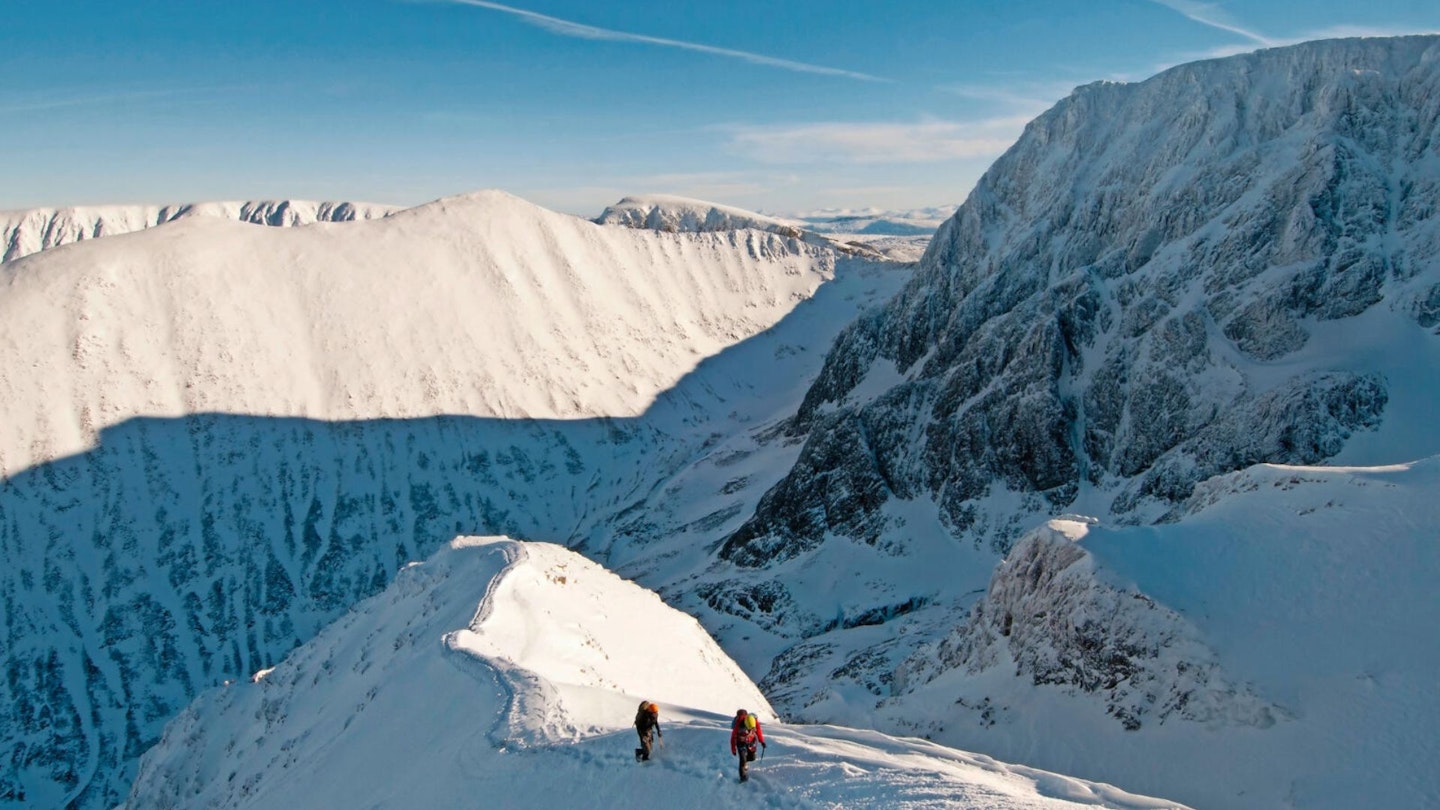
Ledge route is one of the four classic ridges on Ben Nevis. A devious start creeps along a sequence of sloping ledges that cut across the steep south-east flank of the huge Carn Dearg Buttress. At the top of the buttress the route changes dramatically and a spectacular arête leads to the summit plateau. Despite being technically straightforward, the ledge Route is a serious undertaking, particularly as the approach is often prone to avalanche.
Location: Fort William, West Highlands
Total Ascent: 1360m
Total Route Length: 15km
Technical difficulty: Grade I/II depending on the line chosen
3. Liathach
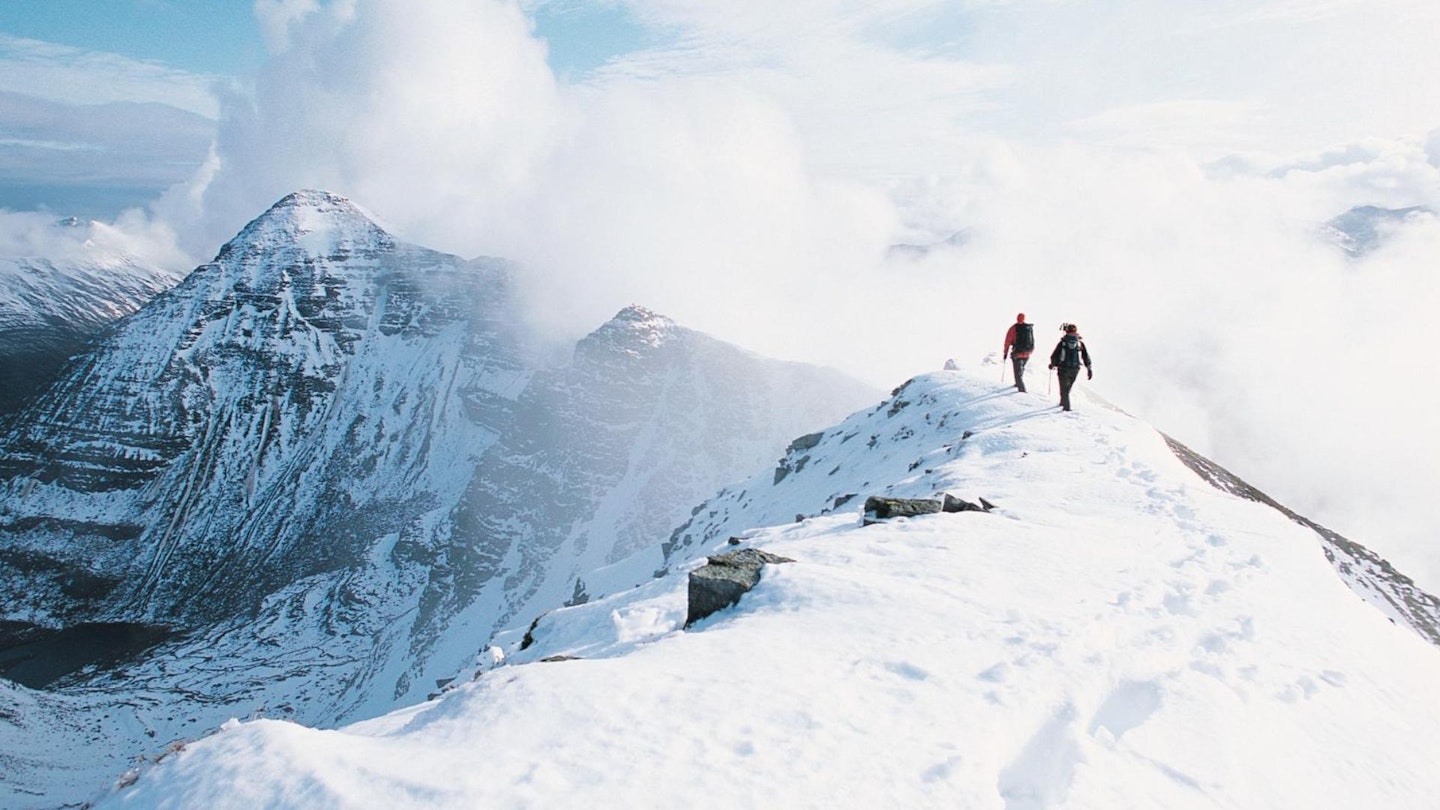
Probably the best ridge traverse on the mainland, on undoubtedly the finest mountain in Scotland. It is a superb combination of high-level ridge walking and exposed scrambling surrounded by otherworldly scenery. expect continuous Grade 1 terrain, both up and down. In very snowy conditions, the crossing of the Am Fasarinen pinnacles, a series of narrow sandstone towers located midway between the mountain’s two highest peaks, is unavoidable and will increase the difficulty to Grade 2.
Location: Torridon, Northwest Highlands
Total Ascent: 1326m
Total Route Length: 11.5km
Technical difficulty: Winter Grade II
4. Bidean Nam Bian
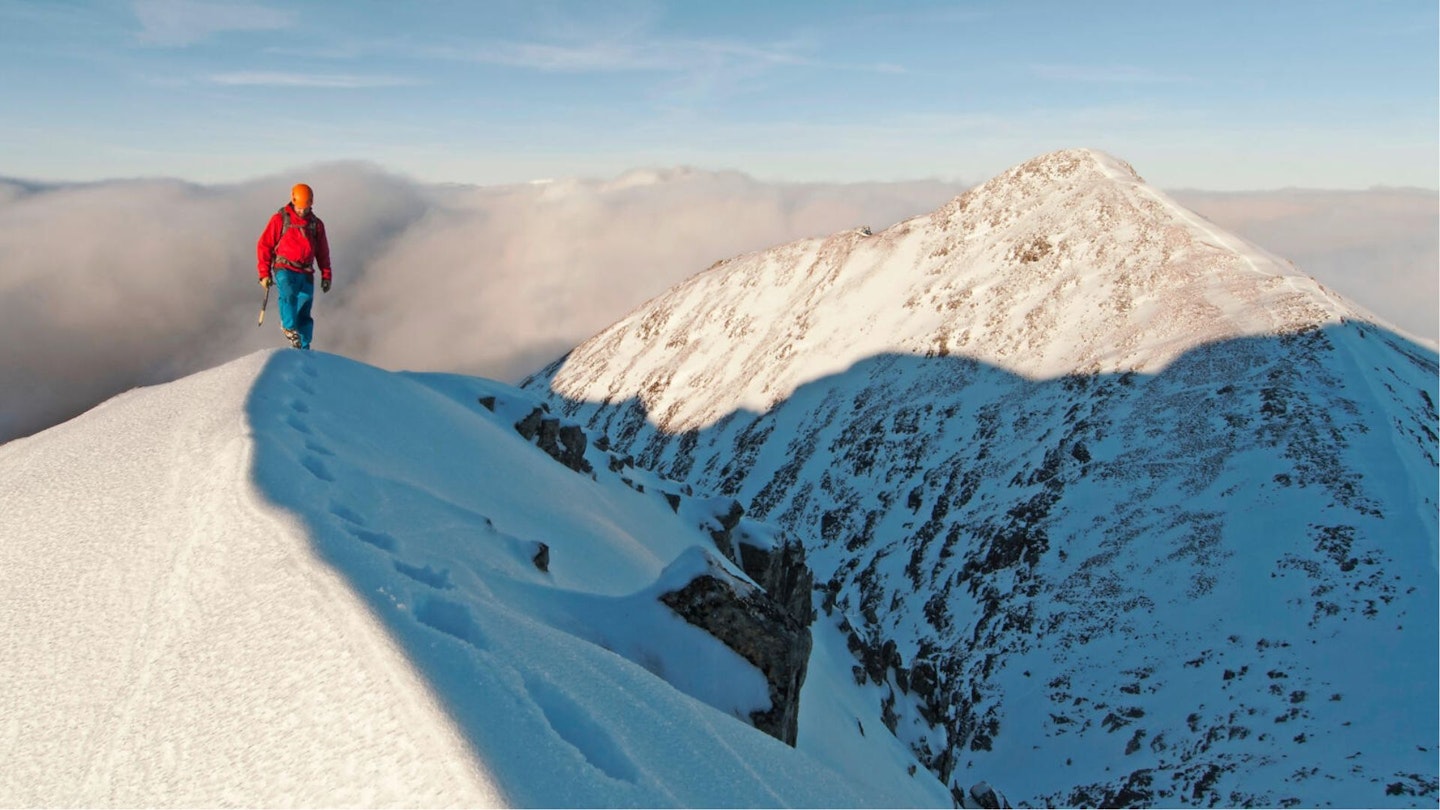
This complex massif bounds the south side of Glencoe and provides a wealth of good winter ridges. For a day’s mountaineering that stays within Grade 1, a scramble up the north-east ridge of Stob Coire nan Lochan takes some beating, especially as it finishes on a fine shapely peak. A stiffer proposition at Grade 2 is the Sron na Lairig, a narrow and airy ridge perched high above a secluded glen in the south-east corner of the massif.
Location: Glencoe, West Highlands
Total Ascent: 1316m
Total Route Length: 11km
Technical difficulty: Winter Grade I or II depending on chosen route
5. Aonach Eagach
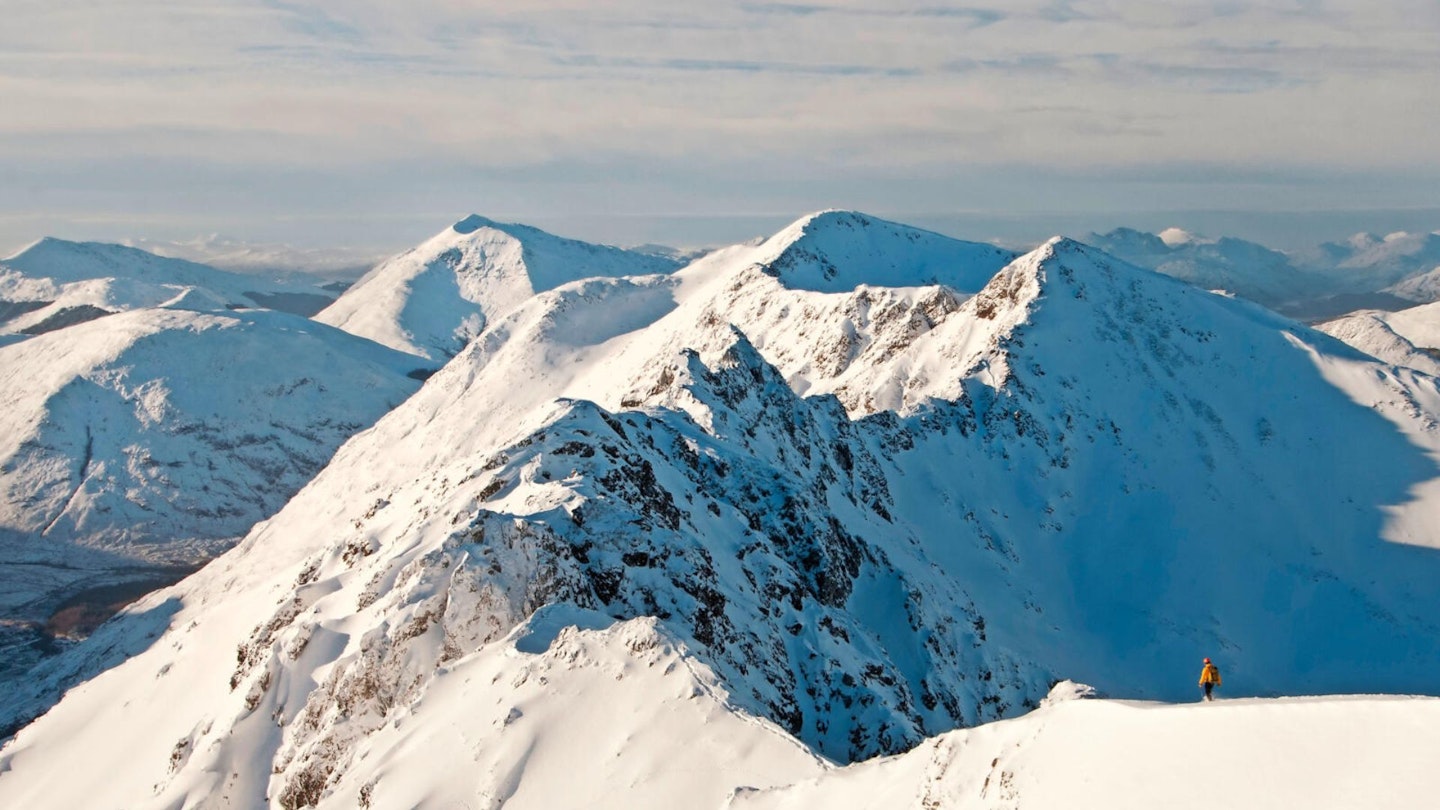
The winter traverse of this famous Glen Coe ridge is an exhilarating expedition. It involves sustained and exposed scrambling over and around towers and pinnacles, narrow ledge shuffles, knife-edge gaps, tricky down-climbs and no shortage of snowy arêtes, all in the most magnificent of surroundings. It is the most committing of the mainland’s big ridges and most teams should expect to rope-up for the majority of the difficulties.
Location: Glen Coe, West Highlands
Total Ascent: 1100m
Total Route Length: 9.5km
Technical difficulty: Winter Grade II (but with no escape routes, lots of exposure, and the high probability of an abseil or two)
About the author
Garry Smith is the author ofScotland’s Winter Mountains With One Axe, a guidebook with detailed descriptions and stunning photography of winter journeys on some of the greatest peaks in the highlands including Ben Nevis, An Teallach and the Skye Cuillin. He lives in North Wales but has spent nearly every winter for the past 27 years based out of Aviemore in the Cairngorms working as a winter Mountain guide. You can find out more about Garry here.
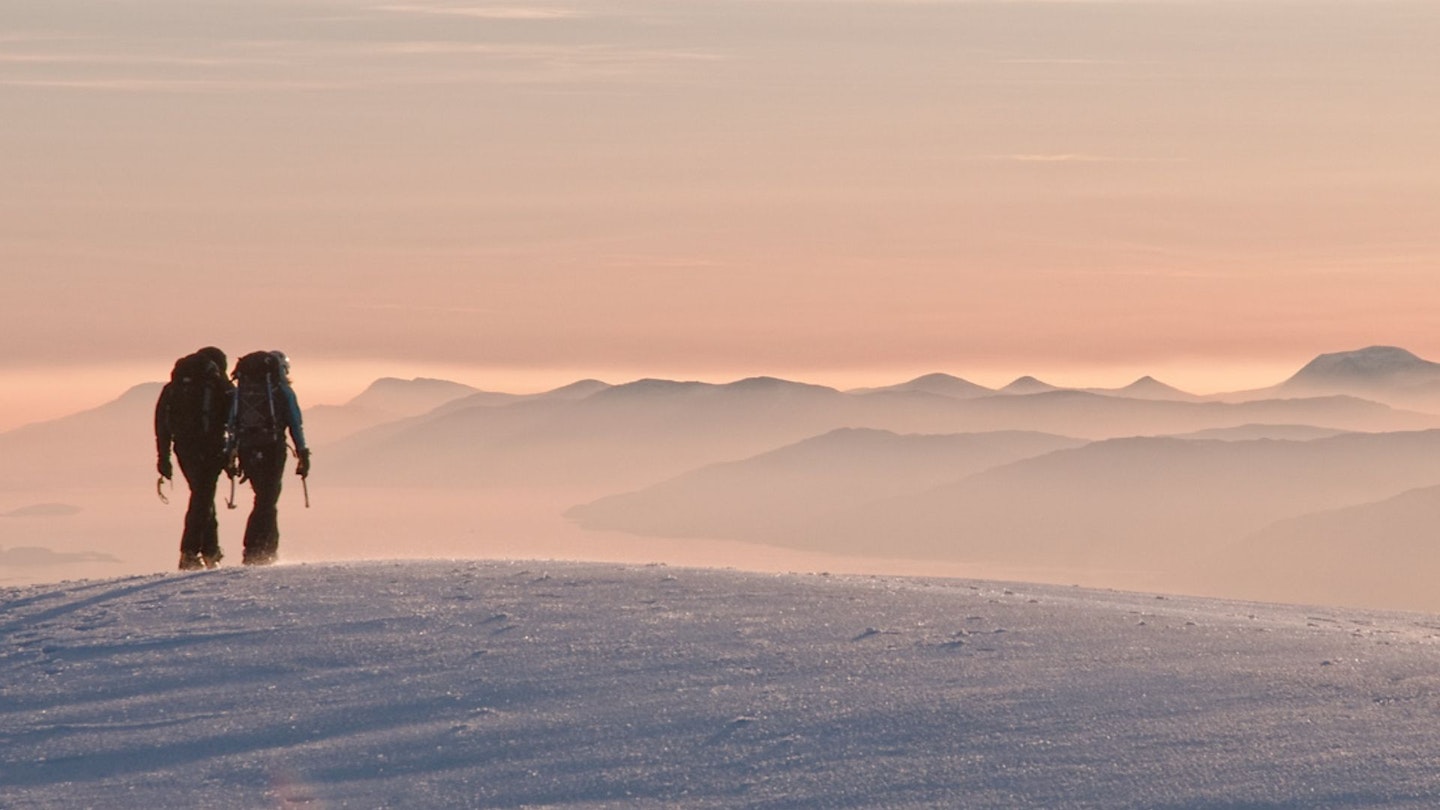
What else to consider when walking in winter conditions
Walking when there's snow or ice underfoot is a much more serious undertaking than summer hiking. There's a lot more than can go wrong in the winter, so having the right kit - and knowing how to use it - is crucial for not becoming yet another statistic. (Or worse: being moaned about in the local Facebook hillwalking forum for wearing trainers up Ben Nevis in February.)
Careful planning and sensible risk assessment are essential winter hillwalking, and your best bet if you're new to it is to go on an introductory course. For now, though, here is a bare-bones checklist of what you should know before you go:
1. Understand both the weather and avalanche forecast
Every seasoned hillwalker will have at least two favourite weather apps which they regularly cross-reference. Getting as much information as you can about what the sky might throw at you is always a good bet, and especially important in winter to avoid nightmarish white-outs. However, when you're out walking in winter, knowing how to read the avalanche forecast is just as important - the clouds may have parted and the sun may be shining, but none of these things will prevent triggering a potentially deathly avalanche if you start descending on the wrong aspect of the hill. You can check the Scottish Avalanche Information Service here.
2. Wear crampons, not micro-spikes
Take crampons wherever you go, and wear them when they're needed, especially on more demanding ridge walks where the risk of slipping is increased. Micro-spikes often give hikers a false sense of security and enable them to attempt routes for which they definitely need full crampons. Crampons and a stiff winter boot (which they're adjusted to for size before you set off) are absolutely essential for winter hillwalking.
3. Bring an ice axe and know how to arrest yourself
And we're not talking about the right to remain silent. In fact, if you do end up tumbling down a hill, be sure as heck to make some noise about it so your team, or anyone else about, knows what's happened. Learning to self-arrest with an ice axe is an invaluable winter skill - practice before you go on a small, snowy knoll, or somewhere else safe but steep enough to simulate the real thing. As with crampons, having an axe on or in your bag won't be much use if you do fall, so have it out and ready as soon as the ground starts feeling remotely risky.
4. Bring a belay jacket and a hot flask
It goes without saying that having warm layers is important for winter, but having a huge jacket that you can put on at a moment's notice over the top of any hardshell can be life-saving if you have to stop for a prolonged period, for whatever reason. It also enables you to sit down and admire the view while you have lunch without having to faff with de-layering then re-layering to keep warm. In addition to a belay jacket, it's also worth the extra weight to carry a flask with something hot inside. Whether it's tea, a herbal infusion, hot squash, chocolate or coffee, something warm to drink (alongside plenty of water) will help keep you cosy and lift your spirits if they need it.
